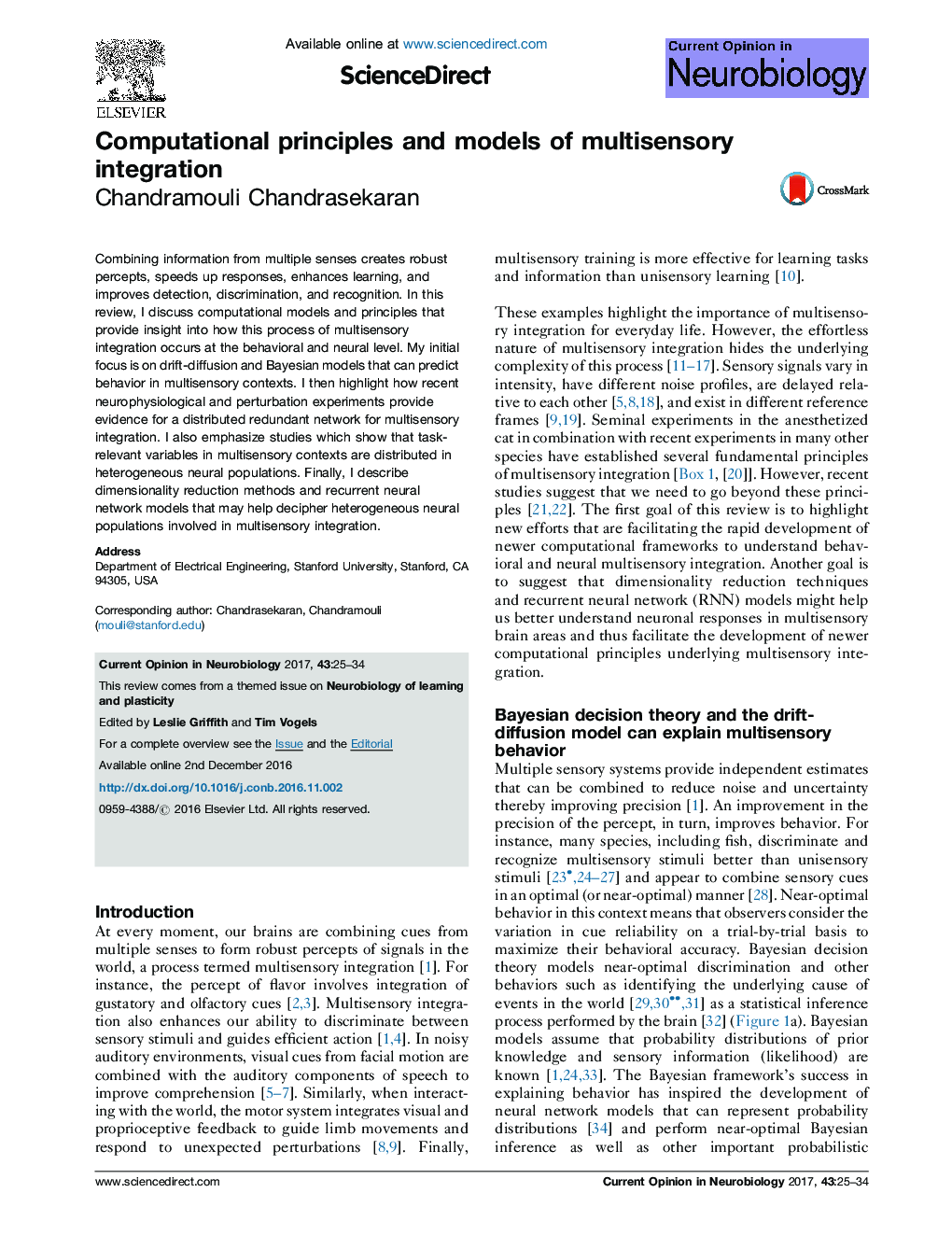| Article ID | Journal | Published Year | Pages | File Type |
|---|---|---|---|---|
| 6265996 | Current Opinion in Neurobiology | 2017 | 10 Pages |
â¢Models combining drift-diffusion and optimality can explain multisensory discrimination behavior.â¢A distributed network with multiple redundant pathways is involved in multisensory integration.â¢Dimensionality reduction can help understand heterogeneous multisensory neural populations.â¢Recurrent neural networks may be a new tool to understand multisensory circuits.
Combining information from multiple senses creates robust percepts, speeds up responses, enhances learning, and improves detection, discrimination, and recognition. In this review, I discuss computational models and principles that provide insight into how this process of multisensory integration occurs at the behavioral and neural level. My initial focus is on drift-diffusion and Bayesian models that can predict behavior in multisensory contexts. I then highlight how recent neurophysiological and perturbation experiments provide evidence for a distributed redundant network for multisensory integration. I also emphasize studies which show that task-relevant variables in multisensory contexts are distributed in heterogeneous neural populations. Finally, I describe dimensionality reduction methods and recurrent neural network models that may help decipher heterogeneous neural populations involved in multisensory integration.
